'Saved by Schindler: The Life of Celina Karp Biniaz' tells story of Camarillo Holocaust survivor
- Oops!Something went wrong.Please try again later.
- Oops!Something went wrong.Please try again later.
- Oops!Something went wrong.Please try again later.
Celina Biniaz was 12 years old and naked when she looked death squarely in the eye and found the courage to utter three short words.
“Let me go,” she said in German to the notorious Nazi doctor Josef Mengele, the Angel of Death, at Auschwitz in 1944. Mengele then pushed her aside rather than to the left, which would have meant certain death.
Biniaz quickly ran away, eventually finding her mother outside, frantically looking for her.
“I don’t know how or why I said it or why it worked,” Biniaz told the Des Moines Register in 1993. “It was a lucky break, a random thing. There was no rhyme or reason for what happened in those days. It was God.”
What has followed in the nearly 80 years since that fateful encounter has been an inspirational journey with deep Iowa roots. Biniaz now calls Camarillo home. Her remarkable story has now been documented in a book written by Des Moines author William Friedricks, “Saved by Schindler: The Life of Celina Karp Biniaz.”
Read more:This Iowan almost died in Auschwitz. More than 80 years later, he’s telling his story.
The book chronicles Biniaz’s life story from her family’s persecution as Jews in Nazi Germany to their rescue by Oskar and Emilie Schindler, whose heroic efforts are credited with saving the lives of more than 1,100 Jews. Schindler’s efforts became famous after release of the Oscar-winning movie “Schindler’s List,” released in 1993 and directed by Steven Spielberg.
Biniaz, who eventually moved to Des Moines as a teenager with her parents and graduated from North High School and Grinnell College, became a school teacher in New York before retiring with her husband in Camarillo. She lives there today at age 91 and is in good health, said her son, Rob Biniaz. Her husband of 62 years, Amir “Bini” Biniaz, a retired dentist, died Oct. 4
How Oskar Schindler rescued a mother and daughter from Auschwitz
For years, Biniaz mostly remained silent regarding the turmoil of her childhood, when her family was first forced by the Nazis to live in a Polish ghetto. Her parents, Irvin and Phyllis Karp, worked in a factory run by a friend of Oskar Schindler, a connection that ultimately got them on Schindler’s list.
In November 1944, Schindler arranged to have the 1,000-plus Jews on his list moved from a labor camp in Poland to Czechoslovakia. A mix-up led to Phyllis Karp and her young daughter being transported to Auschwitz instead, where Celina had her fateful encounter with Mengele. Approximately five weeks later, Schindler arrived and got them out of the concentration camp.
“Celina survived the Holocaust and was saved by being a member of Schindler’s list, but neither defined her," said Friedricks, her biographer. "And for years, she refused to talk about the experience because she did not think anyone could understand. In the postwar United States, she eagerly pursued the American dream, getting an excellent education, marrying, having children and living in the suburbs.”
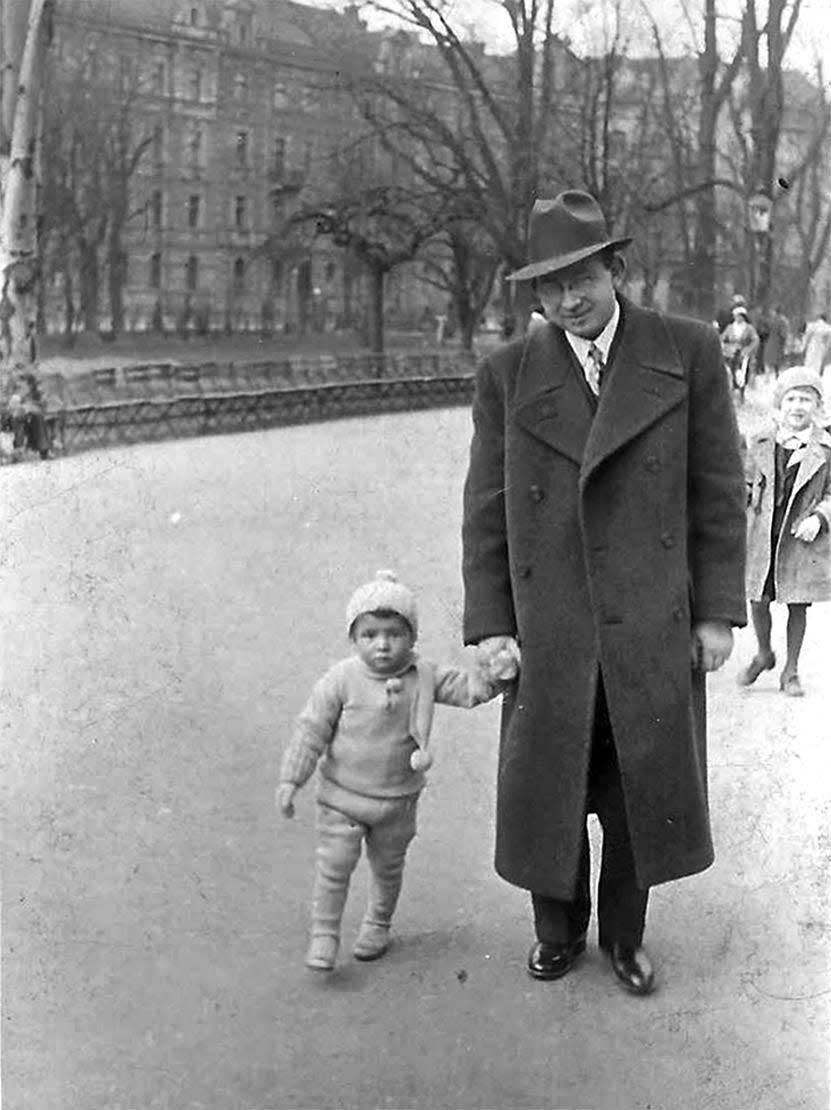
After the book and later the movie "Schindler’s List" came out, Friedricks said, she decided people had context for her Holocaust story and she began talking about it publicly and teaching audiences about its horrors, the dangers of hate and the power of forgiveness.
Rob Biniaz said he and his sister were adults before they learned about their mother’s and grandparents' harrowing experiences during World War II, because she didn't want her children to know the stress she endured.
“Mom has often said that ‘Schindler gave me my life, and Spielberg gave me my voice,’” her son said. Just before the Russians liberated the Jews in Czechoslovakia, the Schindlers rounded up some bolts of cloth and scissors to give to the soon-to-be-freed factory workers in hopes the materials could be used to barter for transportation.
“My mother loves sewing, but it wasn’t until after the book and movie came out that I realized the iron scissors she had came from the camp,” Rob Biniaz said.
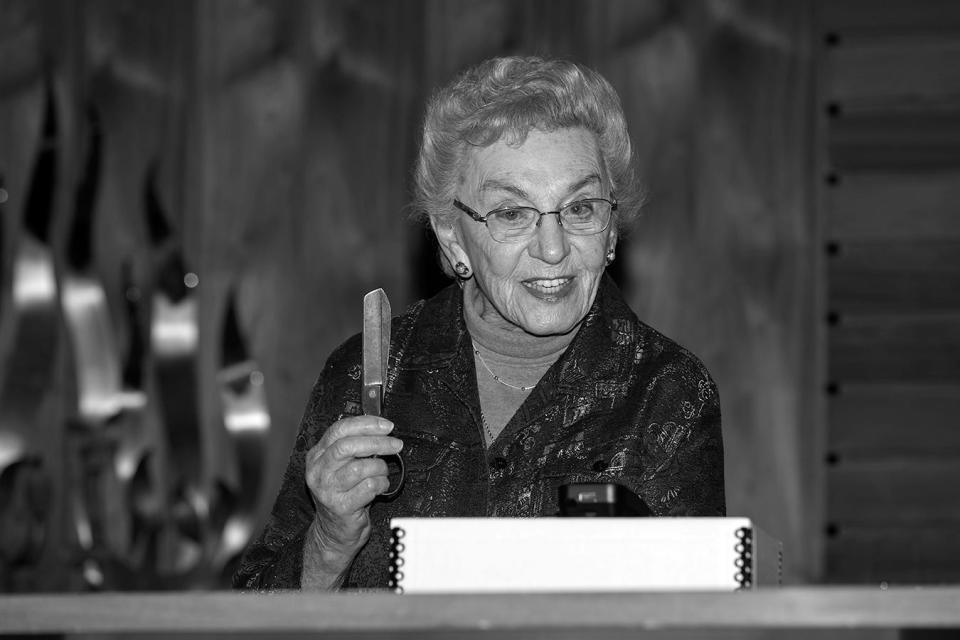
Hearing from Holocaust survivors is important, historical society director says
Sharing the stories of Biniaz and other Holocaust survivors is vitally important because there are so few left, according to Friedricks and Sandi Yoder, director of the Iowa Jewish Historical Society.
“We are the last generation to hear the stories of the survivors firsthand,” Yoder said.
Yoder said there are only two survivors of the Holocaust still living in Iowa.
“It is important for us to hear her testimony," Yoder said of Biniaz, "and understand the atrocities that took place so that we never repeat them.”
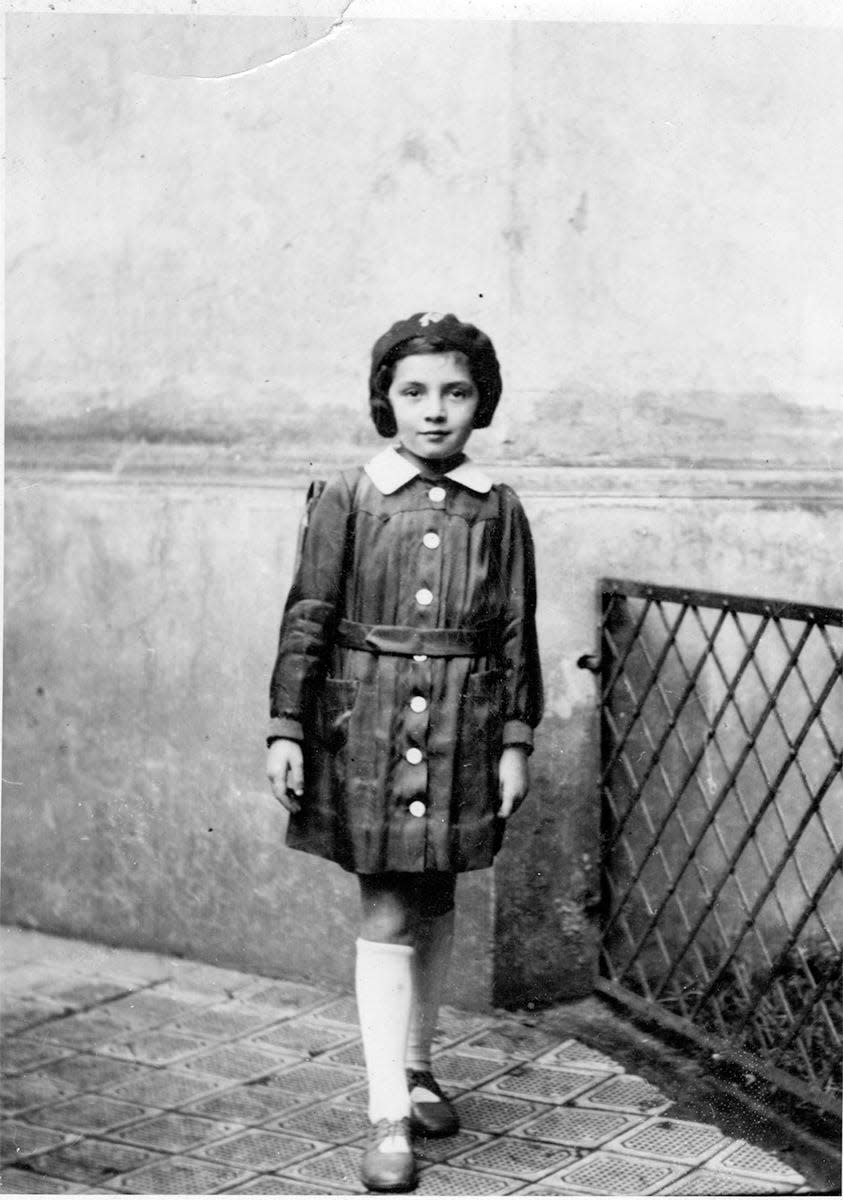
With the population of Holocaust survivors quickly dwindling, Biniaz told the Ventura County Star in 2018 that sharing her story has become more important than ever.
“I speak for our generation,” she said. “We just don’t want (the Holocaust) to happen again.”
Friedricks said several polls show a troubling lack of knowledge about the Holocaust, particularly among young people, including a 2020 survey finding that 10 percent of American adults under 40 have not even heard of the Holocaust.
FBI Director Wray:FBI Director Wray: Antisemitism remains 'pervasive,' vows to protect Jewish communities
“Antisemitism is on the rise here and around the world," Friedricks said. "We need to remember how dangerous antisemitism is and more widely, prejudice, bigotry, racism and xenophobia are and where they can lead if they go unchecked. Knowing and understanding the history of the Holocaust can help keep such an event from happening again.”
Friedricks said he hoped the section of his book that deals with the Holocaust “personalizes its horrors and reminds readers what hate did and where it can lead.”
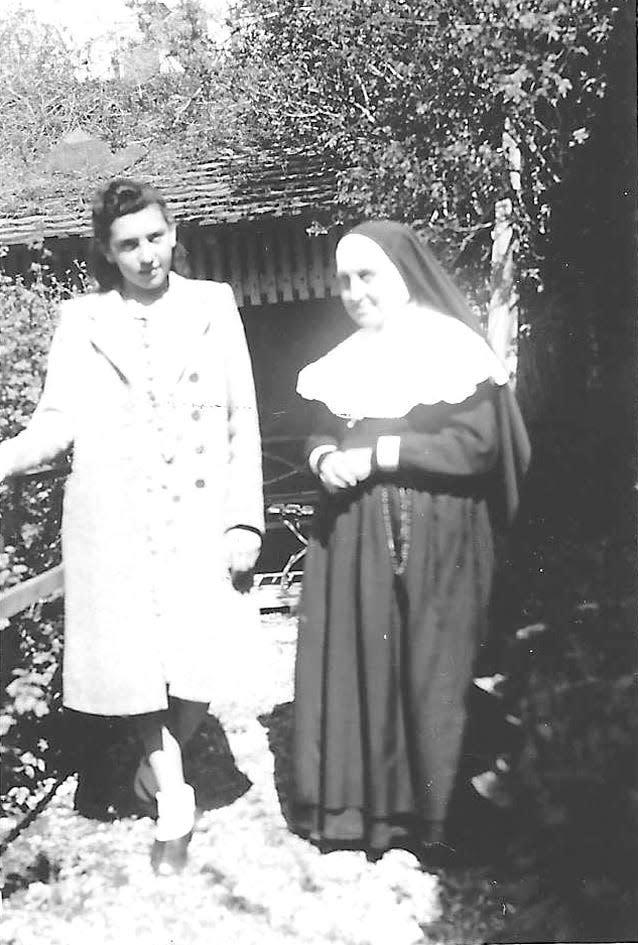
How a German nun helped her overcome her bitterness
Following the war and liberation, Biniaz and her family lived in Germany as refugees for 18 months, where she was tutored by a nun in English and German. Because of her turbulent childhood, Biniaz had received only two years of formal education at that point. So effective were those lessons, she was able to complete tests and be placed in the 12th grade at North High School after the family moved to Des Moines.
But Biniaz gained much more from her lessons under Mater Leontine, the German nun. Biniaz was bitter and hateful of the Germans for all she had been through, Yoder said, and it was the nun who helped the teenager shape a new outlook on life.
“It took her awhile to get over her bitterness when the war ended, but she learned from the nun that hate only hurts yourself, not the person you hate,” Yoder said. “I am still totally amazed that she could go through what she did and end up being such a positive person.”
The nun was her salvation, Biniaz told Friedricks for the book, "because she showed me a way of moving on.”
Rob Biniaz also gives a lot of credit to his grandparents, Irvin and Phyllis Karp, for his mother coming away from the ordeal with an optimistic view of life.
“Many people who experienced the Holocaust ended up bitter for all they had been through," Rob Biniaz said. "My mom’s parents were very resilient and forward looking.”
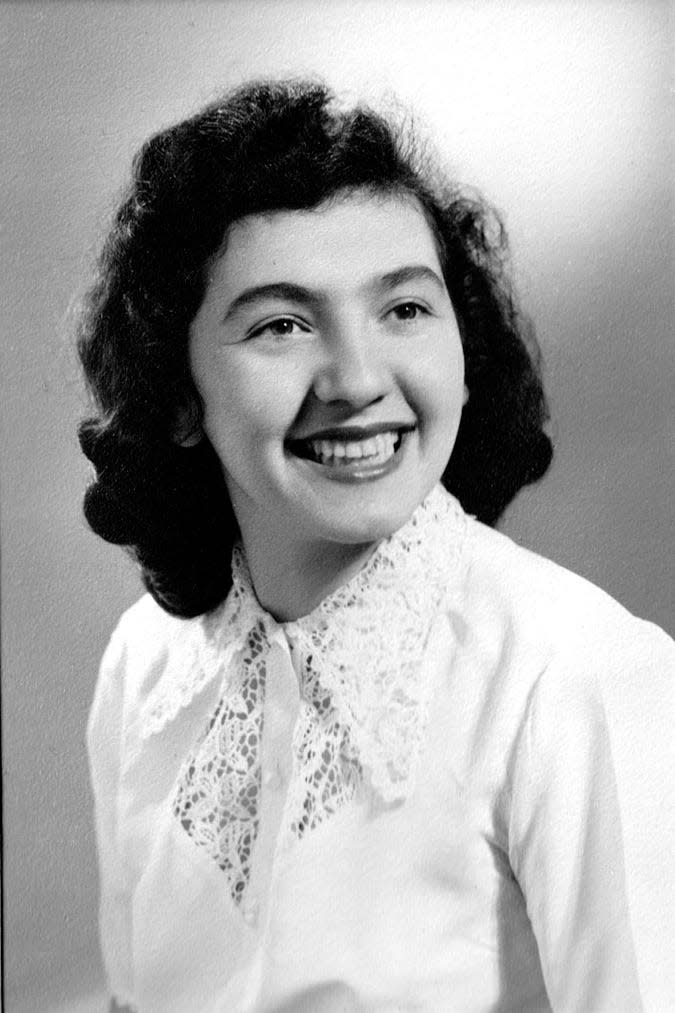
Why coming to Des Moines and Iowa became 'the right choice'
Following the war, there was an opportunity for the family to settle in New York City, but Biniaz’s mother thought the educational opportunities for her daughter would be better in Des Moines and the city would be easier to navigate.
The family moved to Des Moines under the sponsorship of successful businessman David Karp, Biniaz’s uncle. Friedricks said the move to Des Moines is “incredibly important” to Biniaz’s life story.
“Des Moines and Iowa proved the right choice," he said. "Here, Celina adjusted to American culture, learned colloquial American English, made friends and became an active high school senior at North High School.”

In a 2017 article in the Register, Biniaz called her year at North High "the most wonderful year of my life."
"You never appreciate something unless it's been denied to you," Biniaz said in the article. "I so appreciated being in school."
Biniaz eventually received a master’s degree in educational philosophy at Columbia Teachers College in New York, where she met her husband. They lived in New York until 1993, when they moved to Camarillo.
Read more:'Schindler's List' worker, who escaped death as teen, appeals for rejection of hate
Yoder said Biniaz’s career of working with special-education children was particularly gratifying because “it gave her back part of her lost childhood.”
Biniaz inspires every age group, Yoder said.
“It’s not just senior citizens standing in line to talk to her. There’s a lot of teenagers, too,” Yoder said.
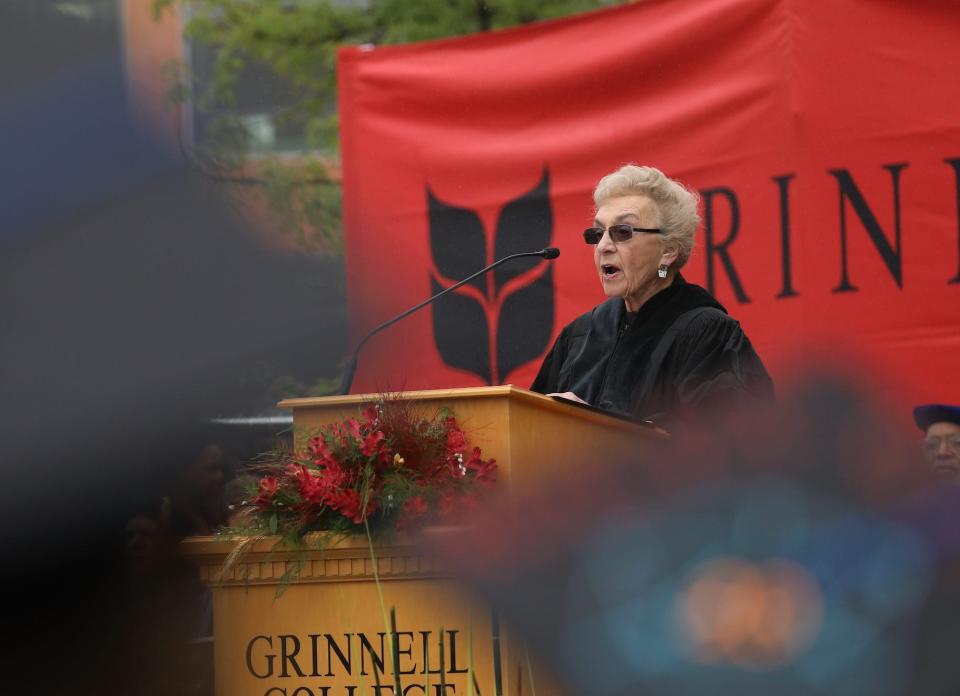
As a historian, Friedricks said it is important to capture Biniaz’s story of the Holocaust and being on Schindler’s list, but that was just one of the reasons for writing the book.
“Her story is important for those reasons, but it’s also important because of the meaningful life she built afterward and the ray of hope she holds out to others facing adversity,” Friedricks said.
Where to find the book
“Saved by Schindler: The Life of Celina Karp Biniaz,” by William B. Friedricks, is available directly from the publisher, Ice Cube Press, www.icecubepress.com. Friedricks, of Des Moines, is a professor emeritus at Simpson College.
This article originally appeared on Des Moines Register: New book tells story of a Holocaust survivor from Camarillo

